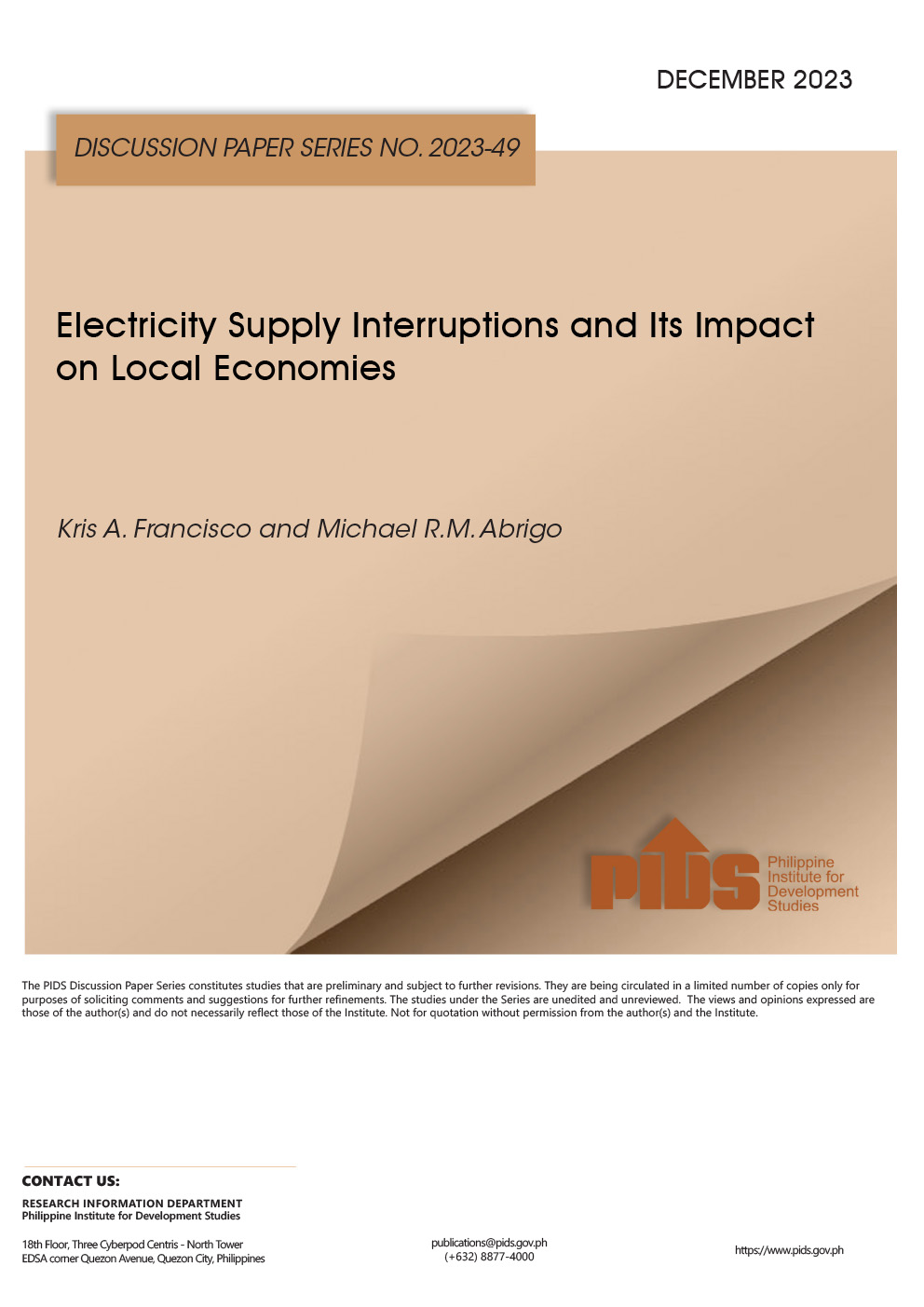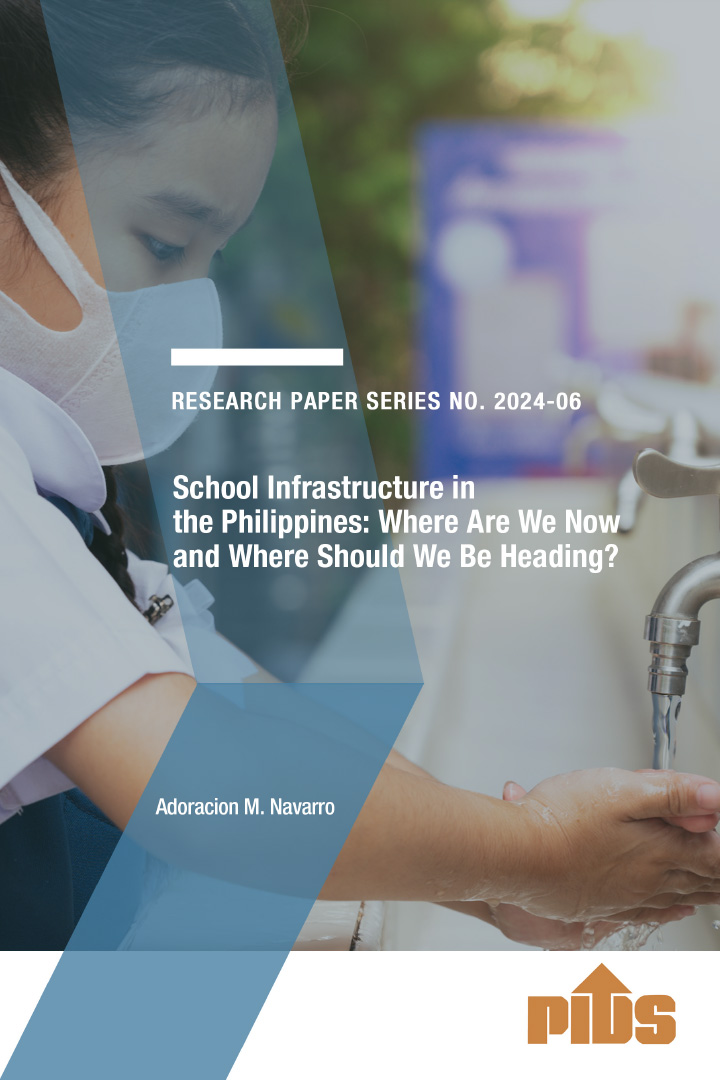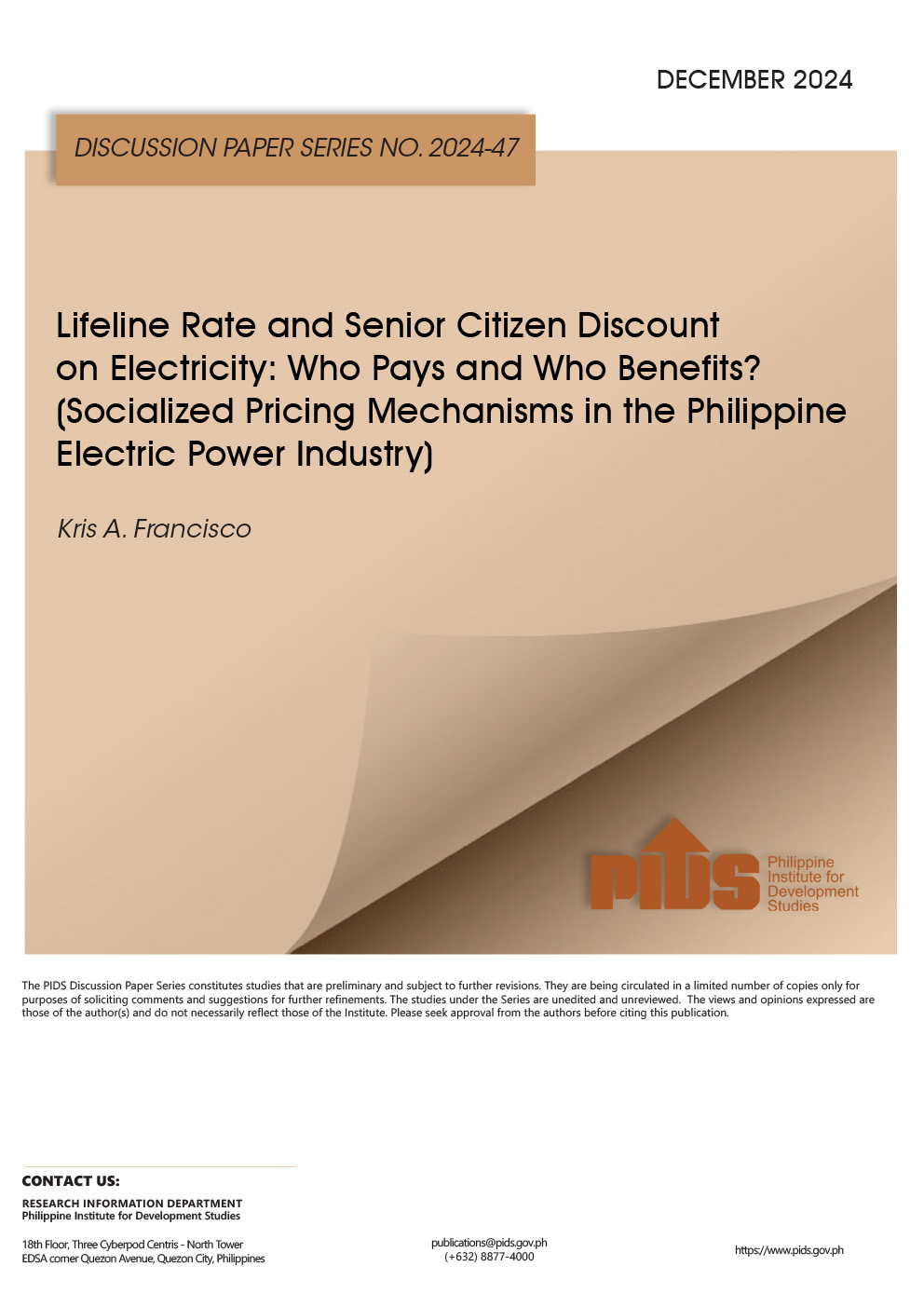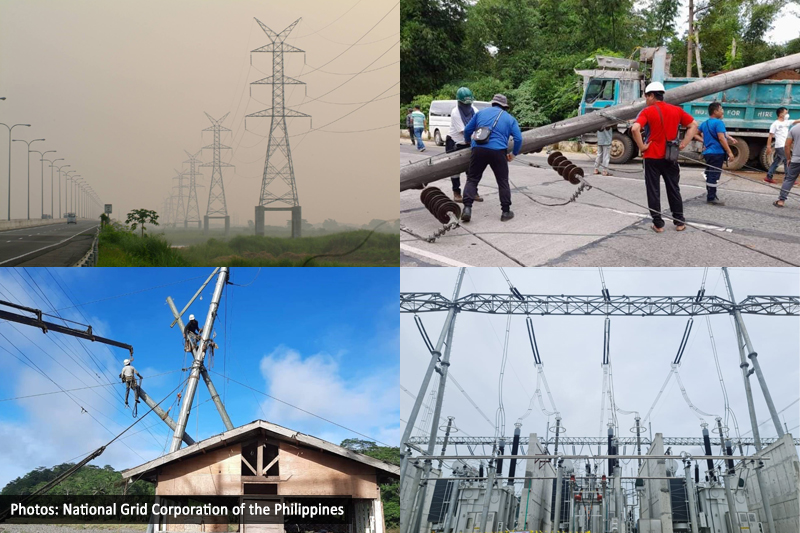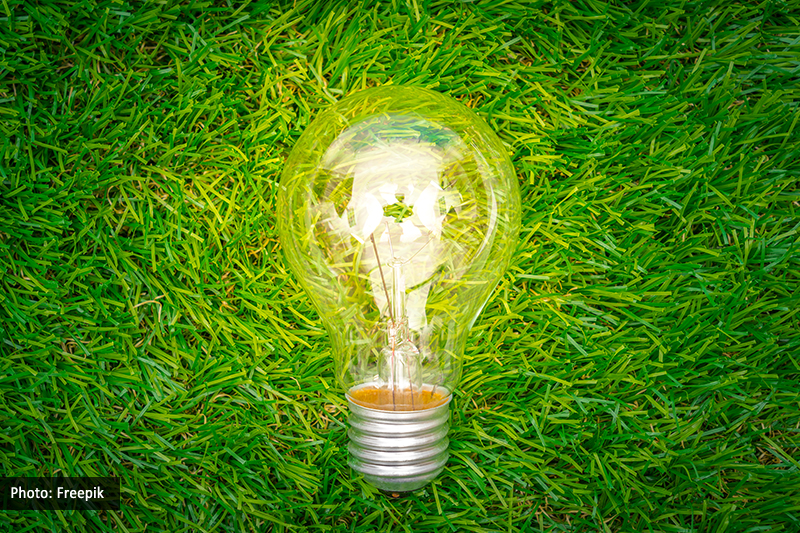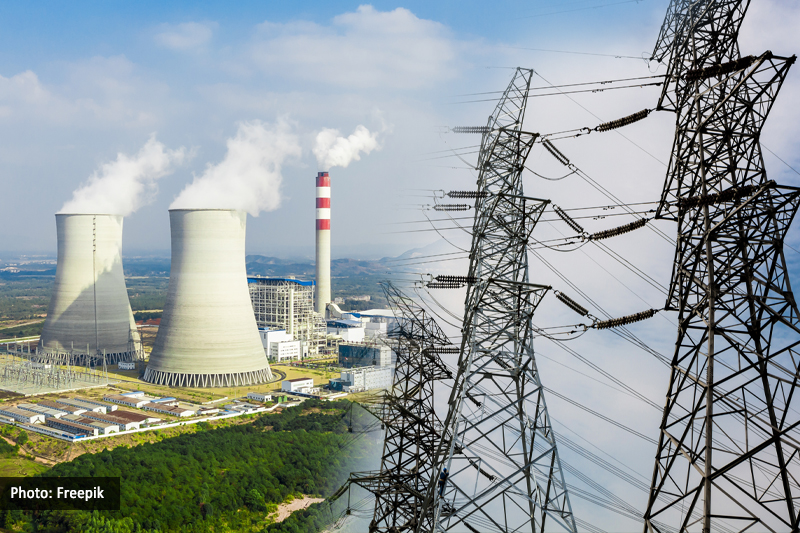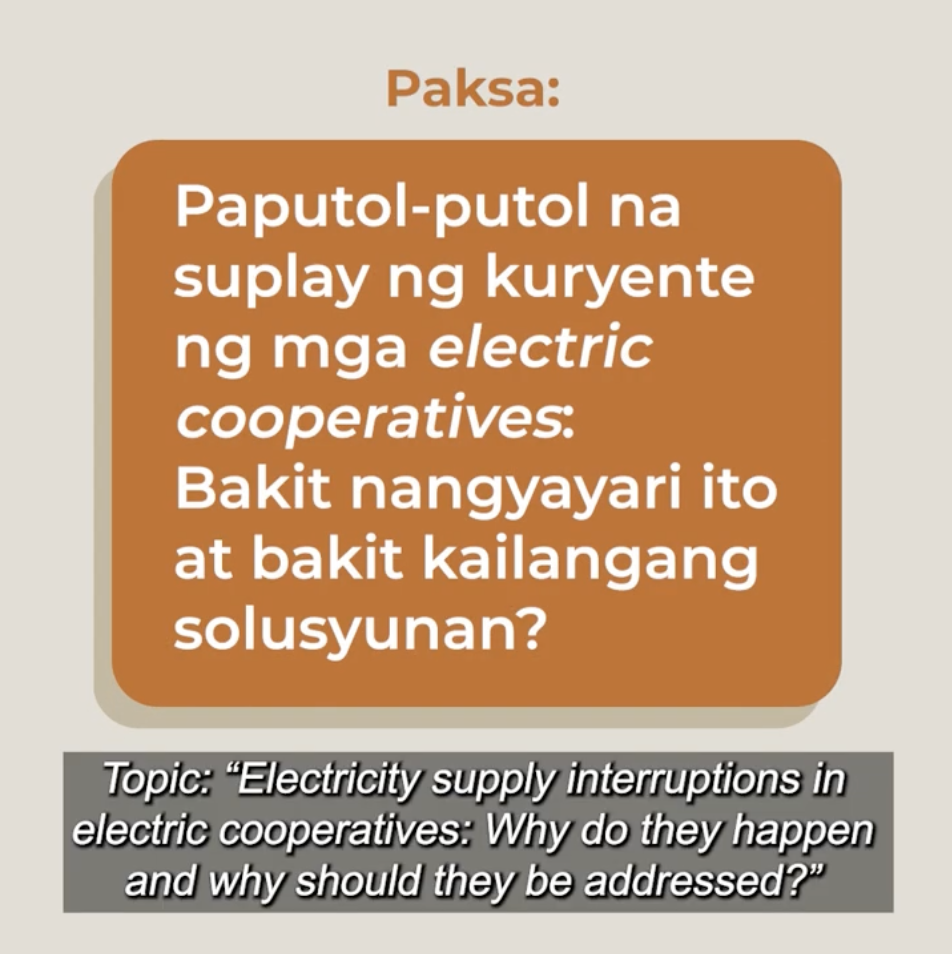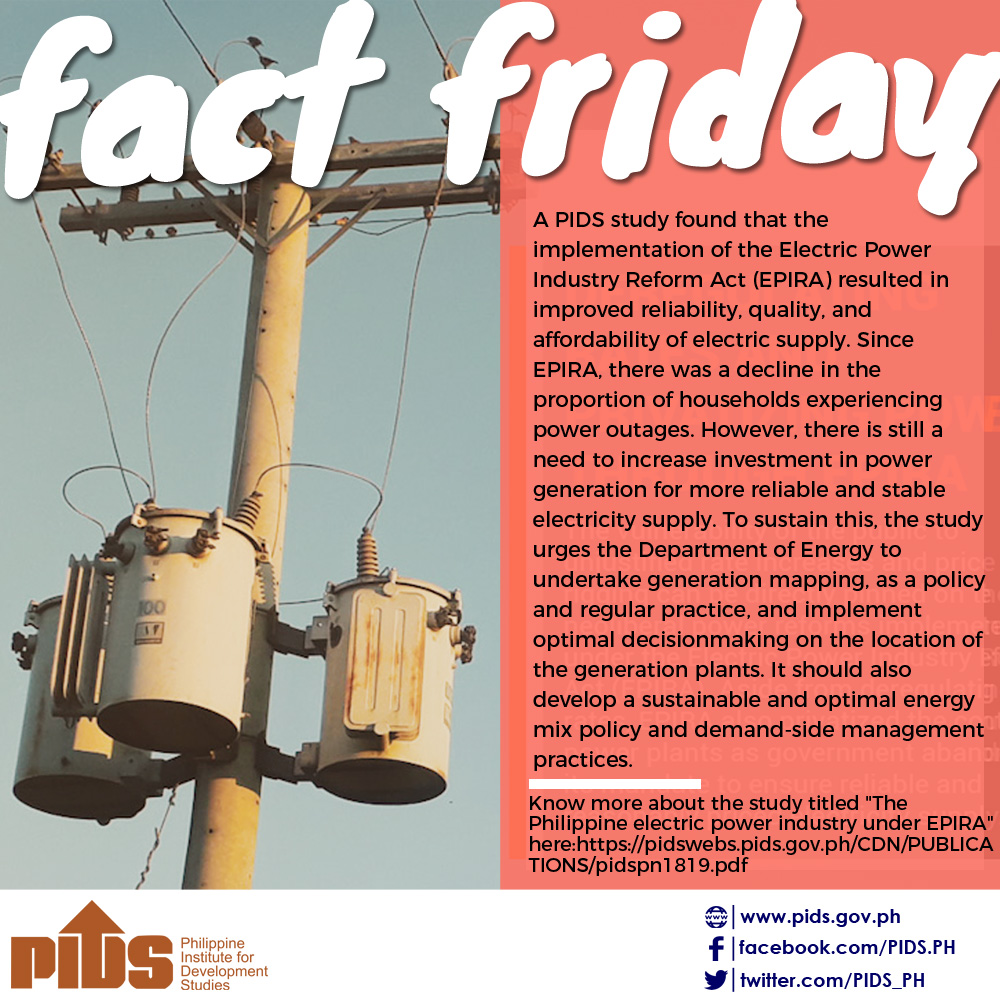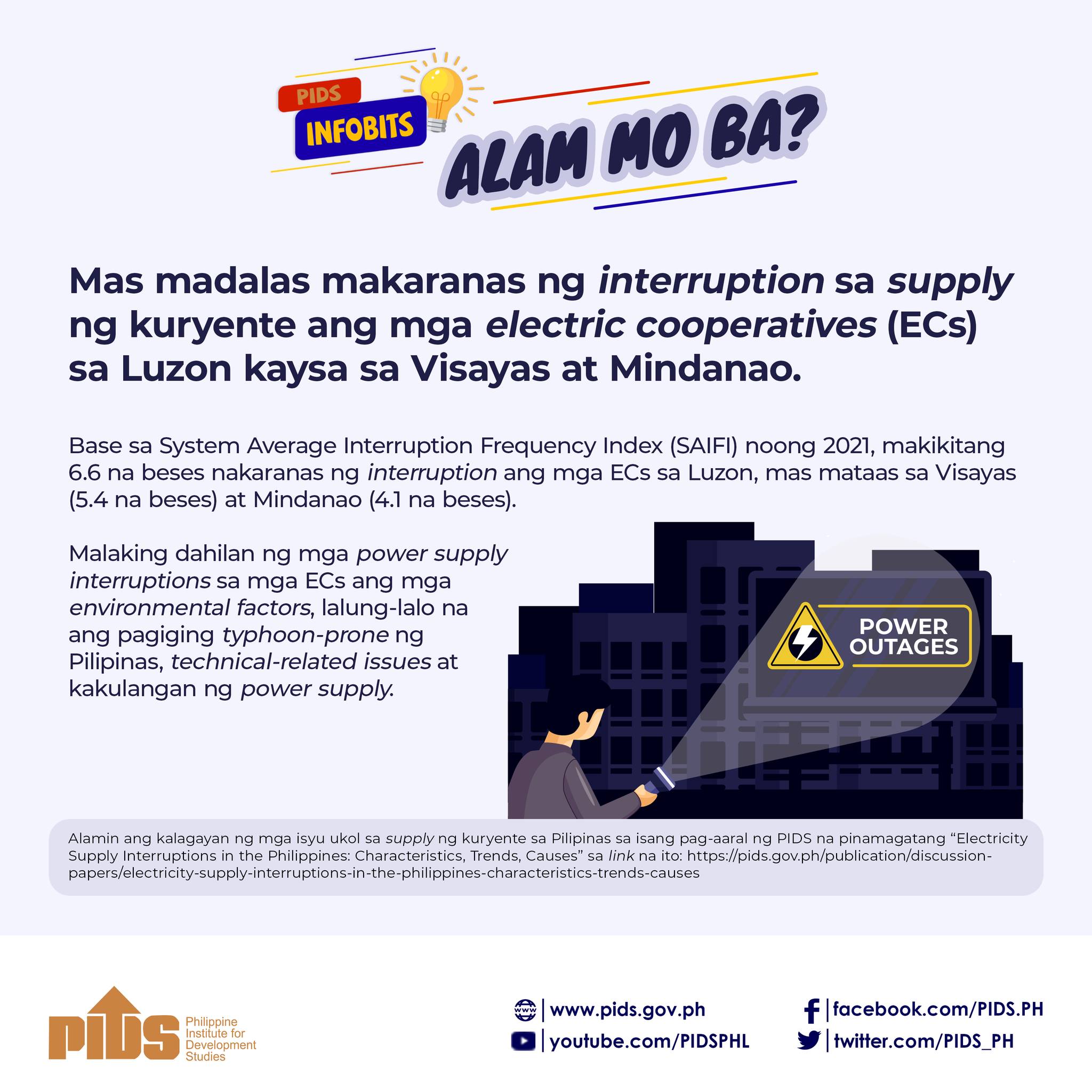Despite the wider of spread growth and more advanced technology seen in the next years, the Philippine Institute for Development Studies (PIDS) said that about 9 percent, or 63 million people within the Association of Southeast Asian Nations (Asean) will still lack electricity and access to electricity by 2030. The PIDS research paper released last week, titled "Energy Market Integration and Energy Poverty in Asean,” stated that there are "more than 127 million people [who] lack access to electricity while at least 228 million still rely on traditional biomass for cooking and lack access to modern cooking facilities” in Southeast Asia. The study cited the 2012 International Energy Agency (IEA) survey which examined Asean households in 2010. The survey showed that the Philippines ranked third in countries in Asean with high numbers of households without access to proper electricity, having only 83-percent electrification rate which translates to a total of 16 million persons without access to electricity. Singapore and Brunei’s electrification rates are 100 percent, and Malaysia’s 99 percent. The Philippines followed Indonesia and Myanmar, that only had 73 percent and 49 percent electrification rate, as well as 63 million and 26 million persons without access to electricity, respectively. The PIDS study also showed that the Philippines is among the developing Asian countries that still relied on traditional biomass for cooking, with 50 percent of the population, or 47 million Filipinos still using the traditional method. Other developing Asian countries resorting to traditional biomass to cook include India with 66 percent (772 million), Bangladesh with almost their entire nation of 91 percent (149 million), Pakistan with 64 percent (111 million), Indonesia with 55 percent (128 million) and Vietnam with 56 percent (49 million).

